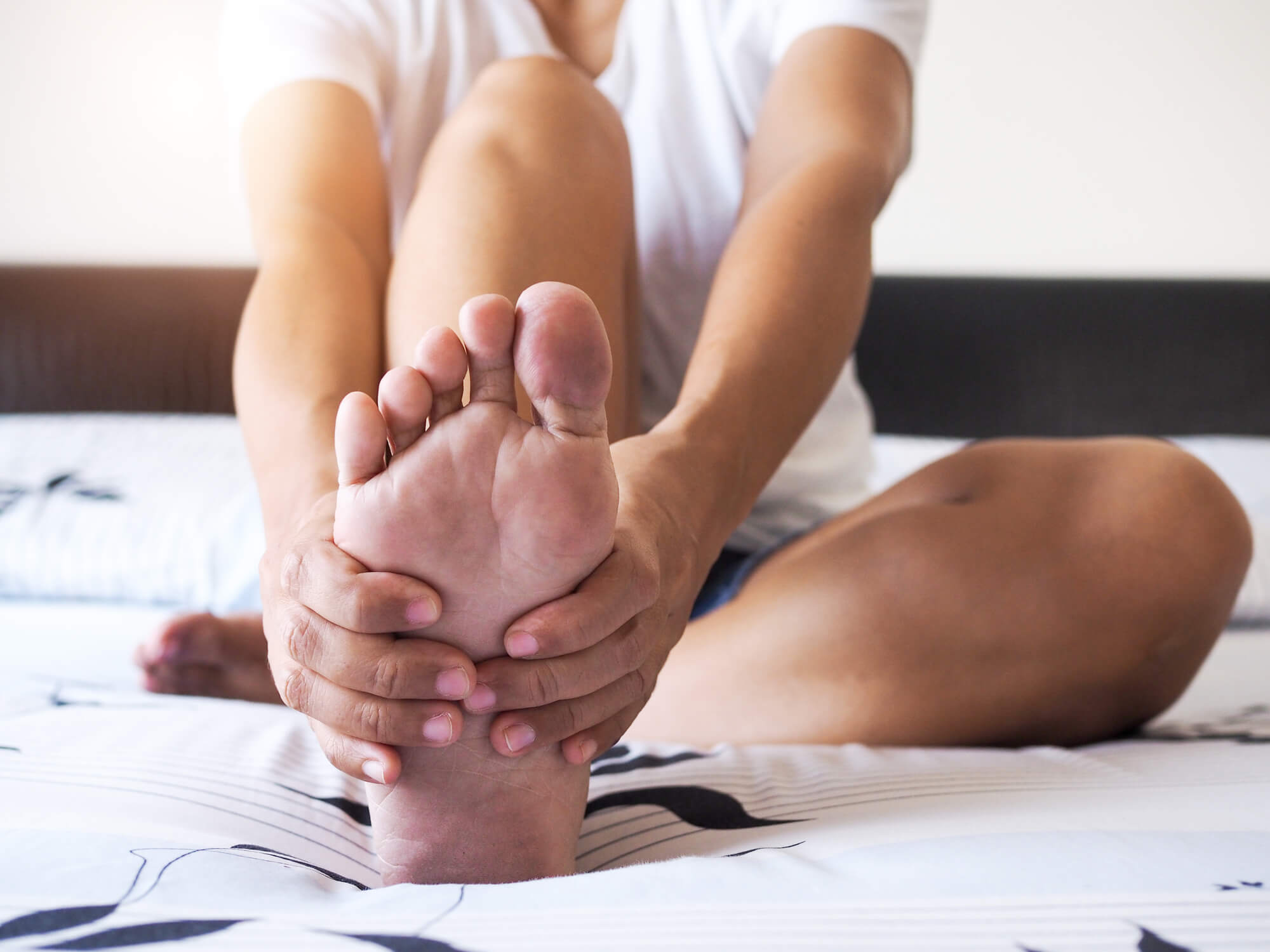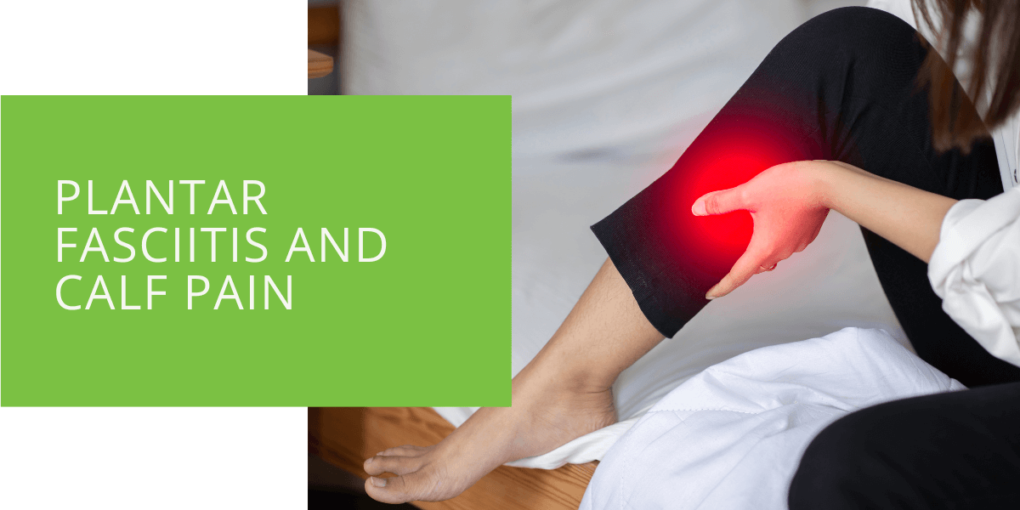Plantar Fasciitis and Calf Pain
Plantar fasciitis and calf pain are common foot issues that often go hand in hand. The plantar fascia, a thick band of tissue running along the bottom of the foot, and the calf muscles significantly impact foot mechanics and stability. This article will delve into the relationship between plantar fasciitis and calf pain, explore their causes, and provide effective treatments and preventive measures for lasting relief and foot health.
What is Plantar Fasciitis?
Plantar fasciitis is characterized by inflammation and irritation of the plantar fascia, resulting in pain, primarily in the heel area. This condition is often caused by repetitive strain, overuse, or excessive tension on the plantar fascia. Common symptoms include sharp heel pain, especially upon waking or after prolonged rest periods, and discomfort that worsens with weight-bearing activities.
Calf Muscle Pain in Plantar Fasciitis
Calf pain is closely related to plantar fasciitis due to the interplay between the plantar fascia and the calf muscles. The calf muscles, including the gastrocnemius and soleus, play a vital role in foot and ankle movement. Tightness or imbalances in these muscles can contribute to strain on the plantar fascia, exacerbating the symptoms of plantar fasciitis. Calf pain may manifest due to these imbalances, and addressing it becomes crucial for comprehensive treatment.
The Biomechanics of Calf Strain
Understanding the biomechanics of calf strain can shed light on the relationship between calf pain and plantar fasciitis. Excessive pronation (inward rolling) or supination (outward rolling) of the foot can place increased stress on the calf muscles and alter the mechanics of the plantar fascia. These imbalances can create tension, leading to pain and discomfort in the calf and foot areas.

Treating Plantar Fasciitis and Calf Pain
Stretching and Strengthening Exercises
Stretching exercises can help alleviate tightness in the calf muscles and relieve strain on the plantar fascia. Effective stretches include the calf stretch, where you stand facing a wall and lean forward with one leg extended behind you, keeping the heel flat on the ground. Strengthening exercises for the calf muscles, such as calf raises or eccentric calf exercises, can promote stability and support.
Footwear and Orthotic Considerations
Choosing appropriate footwear is essential to support the foot and alleviate calf strain. Look for shoes with proper arch support, cushioning, and a stable heel counter. Orthotic inserts can provide additional support and help distribute pressure evenly across the foot. A podiatrist can evaluate your foot mechanics and recommend customized orthotics for optimal results.
Physical Therapy and Massage Techniques
Physical therapy modalities like ultrasound, electrical stimulation, or manual therapy can aid in relieving calf pain and reducing inflammation. Massage therapy, such as deep tissue massage or myofascial release, can target the calf muscles and promote relaxation and healing.

Preventive Measures for Future Injury
To prevent recurrent plantar fasciitis and calf pain, it's important to incorporate preventive measures into your routine. Regular stretching and strengthening exercises for the calves and plantar fascia can maintain flexibility and strength. Additionally, practicing proper foot mechanics, wearing supportive footwear, and avoiding excessive impact activities can reduce the risk of injury.
When to Seek Professional Help
If the pain and symptoms persist despite conservative measures, it's crucial to consult with a podiatrist or healthcare professional for a comprehensive evaluation. They can diagnose the condition accurately, assess foot mechanics, and recommend appropriate treatment options tailored to your needs.
Conclusion
Understanding the relationship between plantar fasciitis and calf pain is crucial for effective treatment and long-term foot health. You can alleviate pain, promote healing, and prevent future discomfort by addressing the biomechanics of calf strain, implementing targeted exercises, wearing supportive footwear, and seeking professional help when needed. Take proactive steps to care for your feet and seek professional guidance for personalized treatment options. By doing so, you can find relief and maintain optimal foot health.
FAQ
How are plantar fasciitis and calf pain related?
Plantar fasciitis and calf pain are closely connected. Tight calf muscles can contribute to strain on the plantar fascia, leading to or exacerbating plantar fasciitis symptoms. Addressing calf tightness and imbalances is crucial for comprehensive treatment.
Can stretching exercises really help with calf pain and plantar fasciitis?
Yes, stretching exercises are beneficial for relieving calf pain and plantar fasciitis. Regular stretching can improve flexibility, reduce tightness, and promote proper alignment, alleviating strain on the plantar fascia and calf muscles.
How long does it take to see improvement in plantar fasciitis and calf pain?
The timeline for improvement varies for each individual, depending on the severity of the condition and adherence to treatment strategies. It can take several weeks to months to experience significant relief. Consistency in implementing the recommended treatments is essential for long-term improvement.
Can I continue exercising or running with plantar fasciitis and calf pain?
It is generally recommended to avoid high-impact activities, such as running, during the acute phase of plantar fasciitis and calf pain. Engaging in low-impact exercises, like swimming or cycling, can be more suitable. However, it is best to consult a healthcare professional for guidance on appropriate exercise modifications and a gradual return to activity.
Are orthotics necessary for the treatment of plantar fasciitis and calf pain?
Orthotics can provide valuable support and help correct underlying biomechanical imbalances contributing to plantar fasciitis and calf pain. They can alleviate strain on the plantar fascia and calf muscles, enhancing the effectiveness of other treatments. Consult a podiatrist to determine if orthotics are recommended for your specific condition.
When should I seek professional help for plantar fasciitis and calf pain?
It is advisable to seek professional help if your symptoms persist despite conservative measures, if the pain worsens, or if you have concerns about your condition. A podiatrist or healthcare professional can diagnose accurately, assess your foot mechanics, and recommend appropriate treatment options tailored to your needs.

